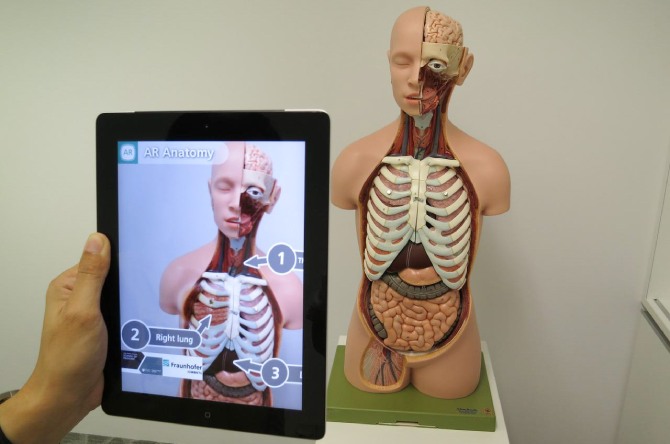Augmented Reality in Books and Publications
It’s always been said that books have the power to transform readers into other worlds. With the advancement of augmented reality (AR) technology, this is now true more than ever. Just like the famous Pokemon Go game, augmented reality books and publications merge the virtual world with reality, giving readers a unique experience.
Many people argue that the future of publishing lies with AR technology. This is due to its engaging nature and the features of interactivity it adds to any publication. So let’s take a look at the benefits and usages of AR in publishing, as well as some examples of how authors included AR in their books and magazines.
What Is the Difference Between AR and VR?
Before we delve deep into the technicalities and benefits of augmented reality in publishing, we need to understand first how it differs from virtual reality (VR). While many people confuse the two, we’ll find now how they work in different ways.
Augmented reality superimposes images and 3D animations on users’ views of the worlds around them. This is done through apps that run on mobile devices and tablets.
Virtual reality, on the other hand, views a 3D world that is completely separated from the real one. Users are then able to interact with this world using special equipment, like VR headsets.
When using augmented reality, users can still see the natural world around them, whereas in virtual reality, they immerse wholly in the digital environment. As for their usages, AR is often used for navigational and advertising purposes, while VR is commonly used in entertainment and education.

Why Use AR in Publications?
Technology has taken over our lives. This is especially true for young adults and teens and it has greatly affected their reading habits. The consumption of printed media has dropped from 37% in 2012 to 29% in 2016; you can only imagine what the percentage is now in 2025!
Digital publications, on the other hand, have been growing in popularity, especially among the younger generations. This is mainly due to the fact that it’s easier to access anywhere and at any time and can also be way more engaging. The visuals and interactivity of digital content also make it the preferred choice of many.
However, these two worlds of print and digital publishing don’t have to be mutually exclusive; using AR in publications is a great way to bring the two together. With a clear vision of how to integrate it in a way that adds value to the readers, AR works on digitizing print and making it more interactive.
What Are Some of the Usages of AR in Publications?
The great thing about using AR in publishing is that it revives traditional publishing and creates a bridge between physical books, magazines, and journals and virtual reading. Using this technology has the potential to transform publishing, making it more immersive than ever before.
For example, AR can add interactive experiences, like a game or a video, to educational content and children’s books. It can also provide visualization of digital content in magazines and newspapers for marketing purposes.
Moreover, AR provides interactive experiences like virtual tours or 3D projections, adding value to the printed material. It adds an extra layer of information, such as audio commentary or video footage to create games and other interactive applications that use the physical environment.
While the potential applications of AR are vast, publishers are still experimenting with how best to use this new technology. So far, AR has been used to create everything from educational books that come to life to choose-your-own-adventure stories.

How Can Readers View AR Content in Publications?
The process of viewing AR content is pretty simple. Publishers can include a trigger (like a QR code or an image pattern) that can be recognized by certain mobile applications. All readers have to do is download this app on their smartphones or tablets, then direct the device camera to this trigger. The AR content would then appear on the screen of their devices.
What Are the Benefits of Using AR in Publishing?
This technology has the potential to change how we publish entirely, make the content more engaging, and benefit both the publishers and readers in many ways. The benefits of using AR in publishing include:
- Allowing publishers to create interactive, three-dimensional content that can be experienced by readers using a mobile device or tablet.
- Giving readers an in-depth experience, which helps them understand complex concepts in a simple manner.
- Creating interactive customer experiences like virtual book tours and in-store events.
- Generating new revenue streams for publishers, such as in-app purchases and subscription models.

What Are the Drawbacks of Using AR in Publishing?
While augmented reality has many potential applications in the publishing world, there are also some potential drawbacks, such as:
- It could lead readers to be distracted, as they could be tempted to constantly engage with the virtual elements rather than focusing on the main content.
- Augmented reality books and publications could be quite expensive to produce.
- Some individuals might find AR books and magazines intrusive or overwhelming, preferring to read them in a traditional print format.
What Types of Media Can Be Used in AR Publications?
The cool thing about using AR in books and magazines is that it opens the door to countless immersive possibilities. Whatever virtual element you want to add to your publication through AR can probably be added. And here are some examples of the types of media that can be used in AR books and magazines:
- Images
- Videos
- 3D objects that users can interact with
- Audio
- Text
By combining these different media types, publishers can create truly unique and incredible augmented reality experiences.
How Can AR Books Be Used in Education?
According to recent studies, using AR improves education and helps students become more immersed in the learning process. This opens new doors for educators and publishers to present the learning material in more interesting and engaging ways.
Augmented reality has already been used to educate about various topics, such as science, technology, and archaeology. The reason behind using AR books in education is that they can teach complex concepts concretely and visually. For instance, an AR science book can allow kids to see how molecules interact or how plants grow from seedlings to full-grown trees.

What Are Some Examples of AR Publications?
According to Harvard Business Review, the first use of AR in publications was in the year 2008, with a printed magazine ad for BMW. Ever since then, publishers have used AR in various fascinating ways. So let’s take a look at some of the famous AR publications.
The New Yorker
In 2016, The New Yorker magazine made use of AR technology for the first time to give the readers an engaging experience. By downloading and installing an app on their smartphones, the readers can point their cameras at the cover of the magazine to explore the 3D animated cityscape, created by the famous artist Christoph Niemann.

Masters of the Sun
This graphic novel was the product of a collaboration between the music band, Black Eyed Peas, and Marvel. Using an AR app, the panels of the novel pop off the pages and bring the actions of the story to life. The AR content of this story also contains a voice cast that features many stars such as Jaden Smith and Snoop Dogg.

Toy Story Woody’s Augmented Reality Adventure
Some stories never get old, especially when new technologies are involved. In this book, readers can bring characters from Toy Story 4 to life using an AR app. The app also offers children puzzles to solve with these characters, as well as different activities for the children to activate their imagination.

TerraMaps NYC Manhattan Street and Subway map
This is another example of how publishers make use of AR. Once the readers scan this map with their smartphones, they can find listings of events, restaurants, landmarks, and many other useful information about this part of the city.

Animal Kingdom Education Book
AR educational books like Animal Kingdom are great for getting the young ones engaged and excited about learning. Using interactive cards and visuals, children get to know about different animals and their habitats.

The Bottom Line
AR books, magazines, and newspapers are a new way to experience publishing. By superimposing computer-generated images on the real world, these publications offer a reading experience like never before, something that can transport readers to other worlds.
Imagine being immersed in your favorite book, exploring the world of the story and interacting with the characters. These experiences can also be extended from simple puzzles to complex virtual worlds. You name it and AR delivers it!
.
Read More
Best Free Digital Publishing Platforms for Aspiring Authors
Turn Your Blog Posts into an Ebook in Minutes
















